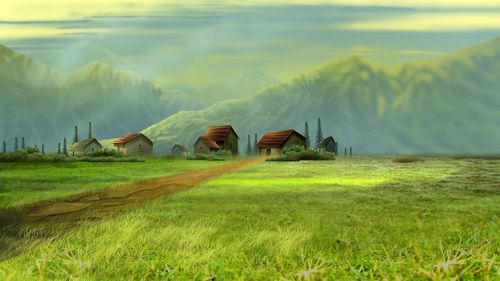A Comparative Study of Past and Present Cultures: Uncovering the Similarities and Differences Between Generations
Have you ever wondered how much our lives have changed over generations? Are we completely different from our predecessors or do we have some similarities with them? By comparing past and present cultures, we can understand how and why they are both unique and similar. Here we explore some key differences and similarities between cultures of the past and present.
Family Structures
Family structure is one of the most significant changes between past and present cultures. In the past, extended families were the norm, with many generations living and working together in the same household. Today, the nuclear family has become the norm, with parents and children living together in separate households, often with both parents working outside the home. The change in family structure has resulted in a shift in people’s perceptions of familial obligations and responsibilities.
Gender Roles
Gender roles have also undergone considerable changes over time. In the past, society had rigid gender-based expectations, with men being the primary breadwinners and women taking care of the home and family. However, over the years, women’s roles have evolved, and they now have opportunities to pursue careers, run businesses, or participate in both work and family. Although gender inequalities still exist, the present culture has made significant strides in bridging the gap.
Communication and Technology
Communication is one of the biggest similarities between past and present cultures. It is as critical now as it was then, and we depend on it to sustain our relationships, professions, and lives. The method of communication, however, has changed significantly over time. With technologies like social media and smartphones, communication has become more efficient, convenient, and instantaneous. We are now more connected than ever before, and we can access information faster and easier than ever.
Education and Career
Education and career choices have also evolved. In the past, having a college degree or formal education was not as significant as it is in the present. Today, having an education and obtaining a degree is valued and highly sought after, with many careers now requiring specialized training or education. The work environment has also changed, with the advancement of technology, automation, and remote work. These shifts have significantly impacted the labor market, and today’s culture is all about education, innovation, and entrepreneurship.
The Bottom Line
Cultures of the past and present may differ radically, but they are not entirely disconnected. As we look back and forth, we see that both cultures share some extraordinary similarities, particularly regarding communication, education, and the value of family. However, the changes in family structure, gender roles, and technology are just a few of the differences that reveal how much society has evolved over time.
To conclude, understanding how past and present cultures differ and what similarities they share is crucial in shaping our future. By learning from the past, we can prepare for the future and create a better world. The comparison of past and present cultures helps us appreciate the world we live in today while recognizing how far we have come as a society.
(Note: Do you have knowledge or insights to share? Unlock new opportunities and expand your reach by joining our authors team. Click Registration to join us and share your expertise with our readers.)
Speech tips:
Please note that any statements involving politics will not be approved.
